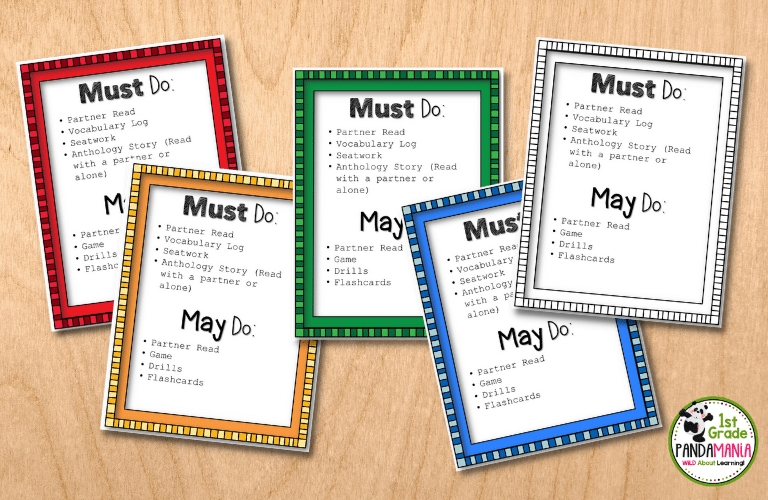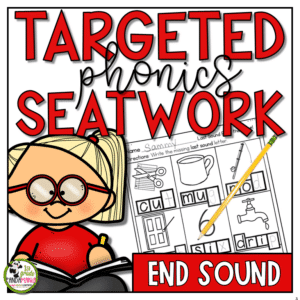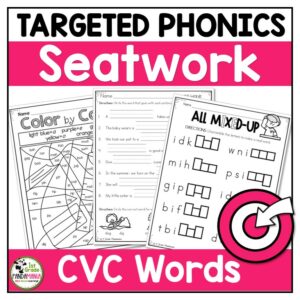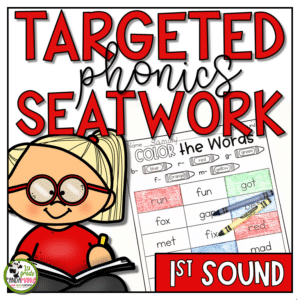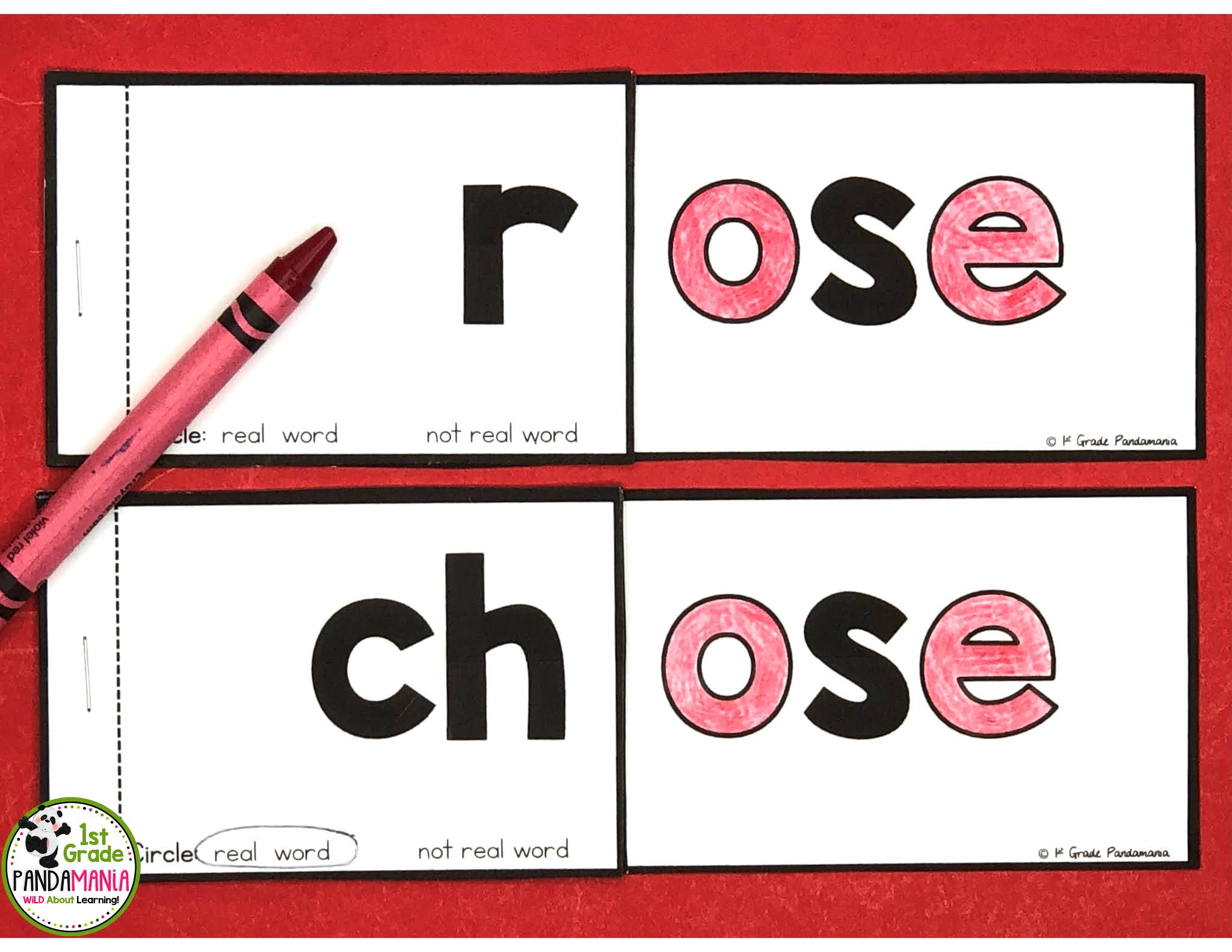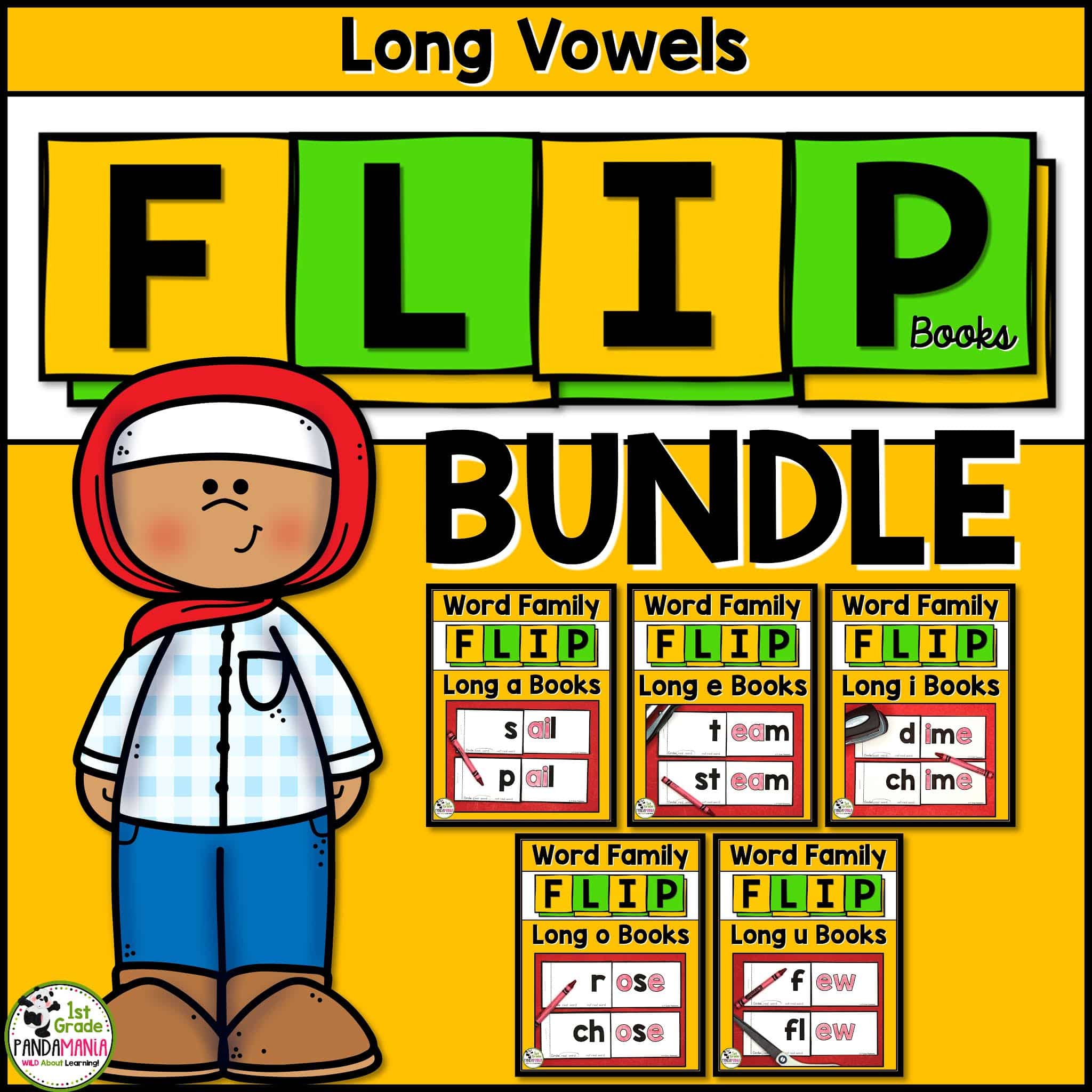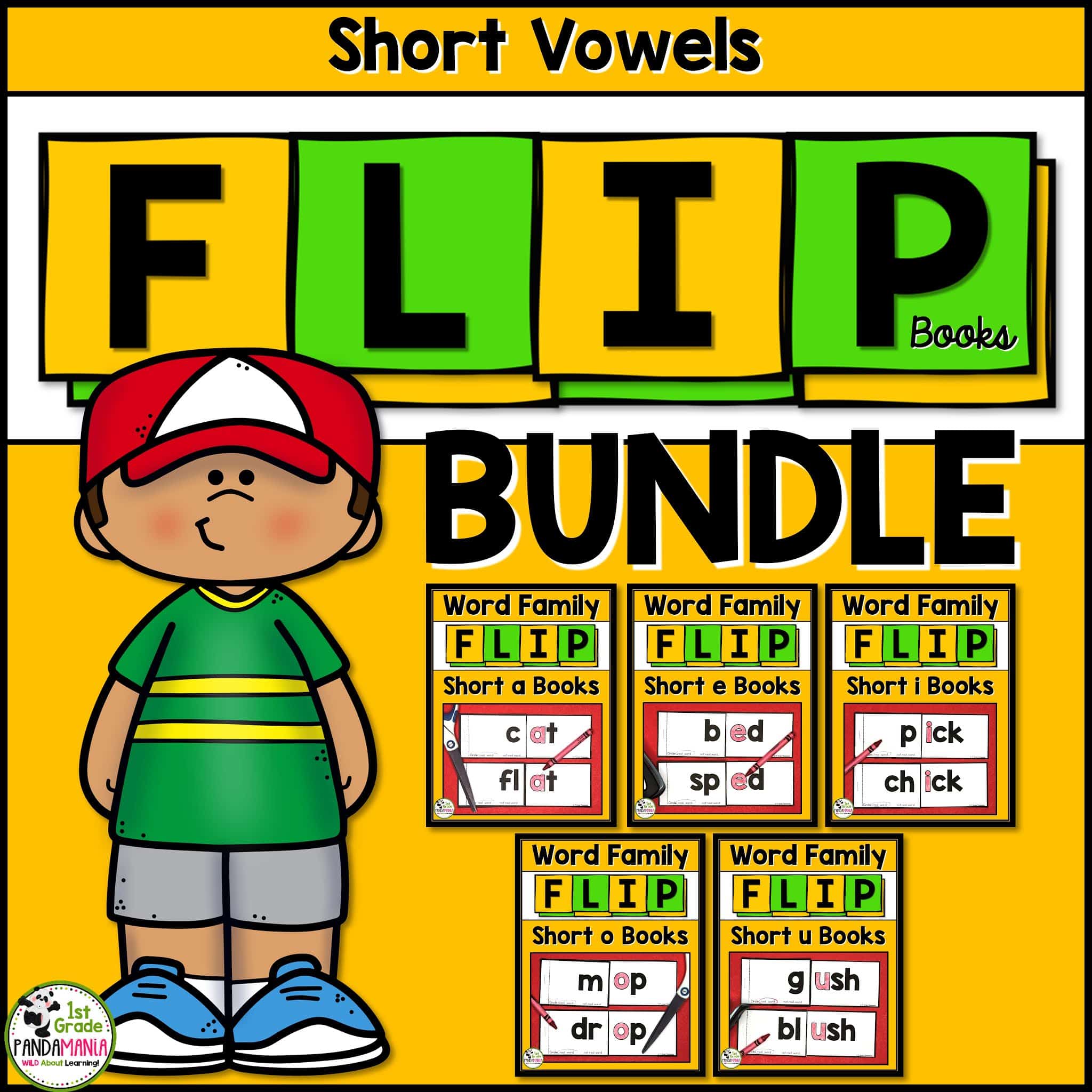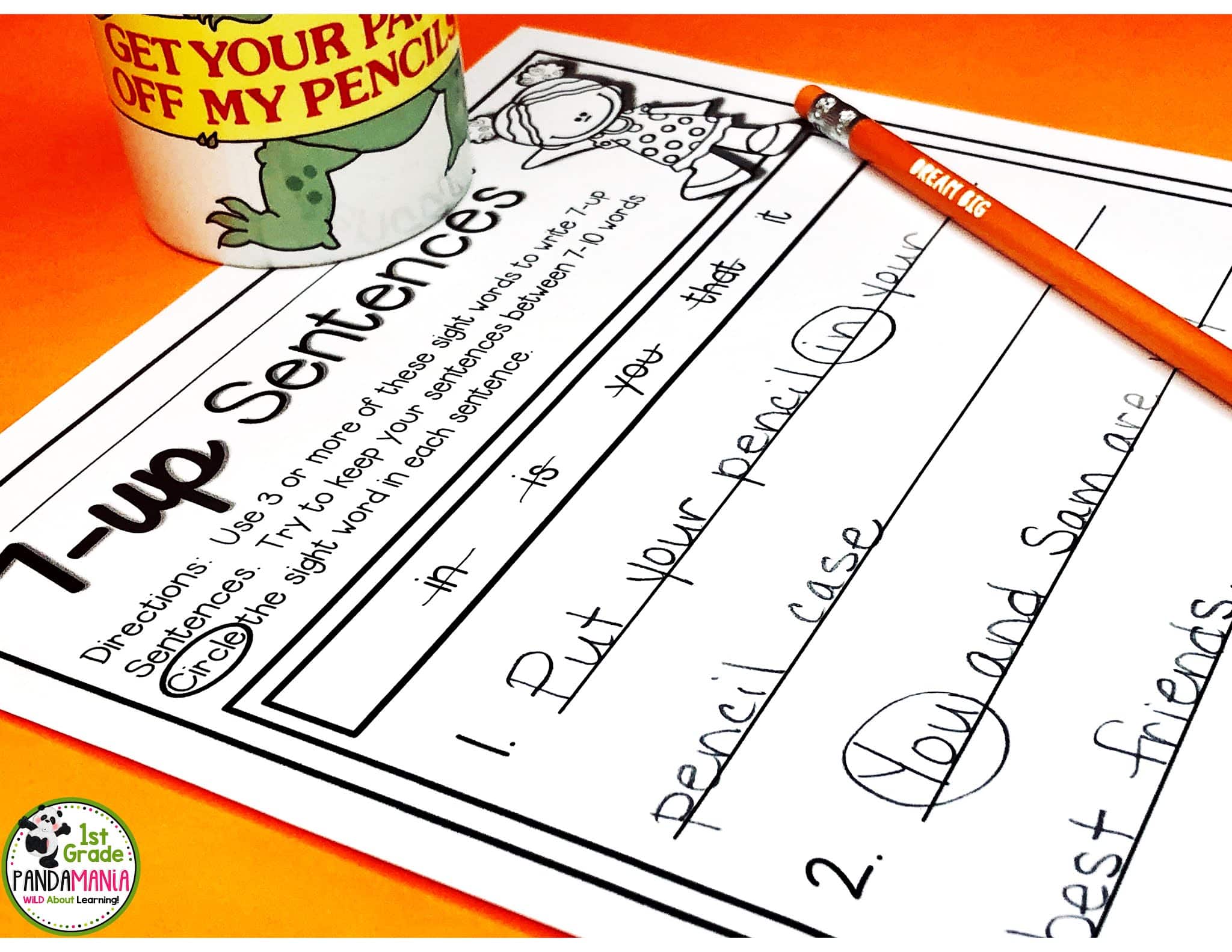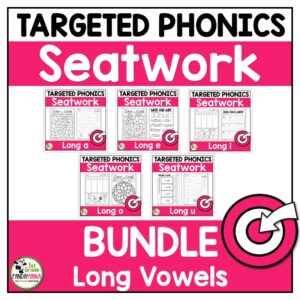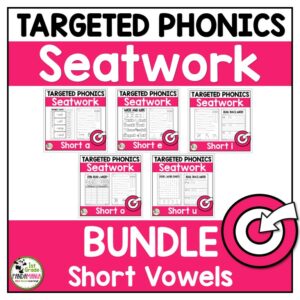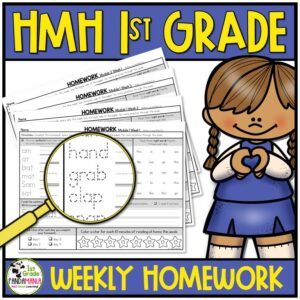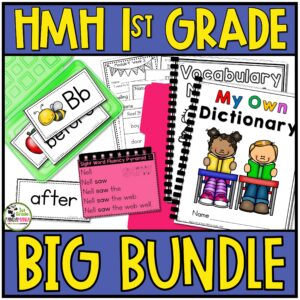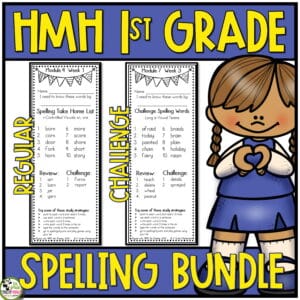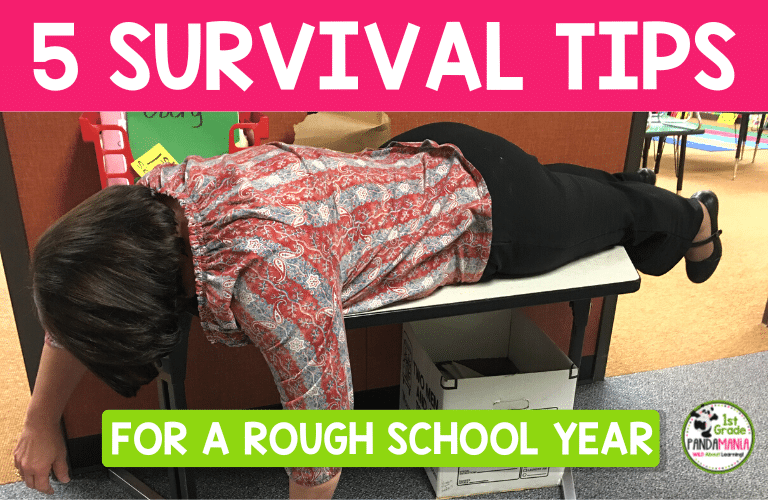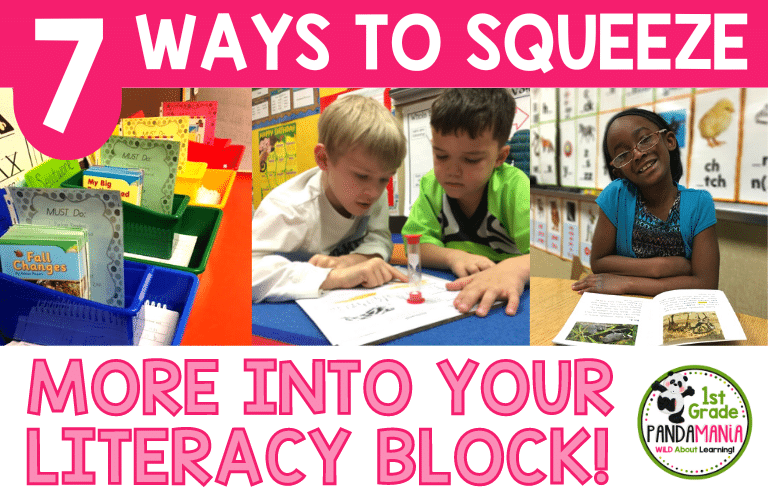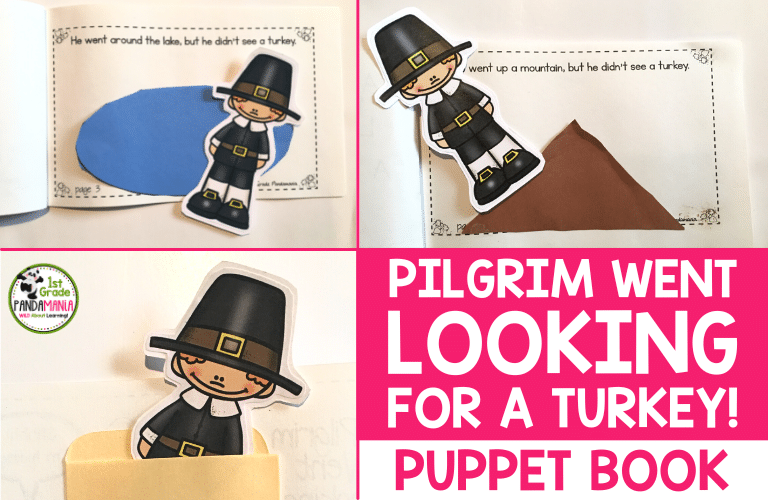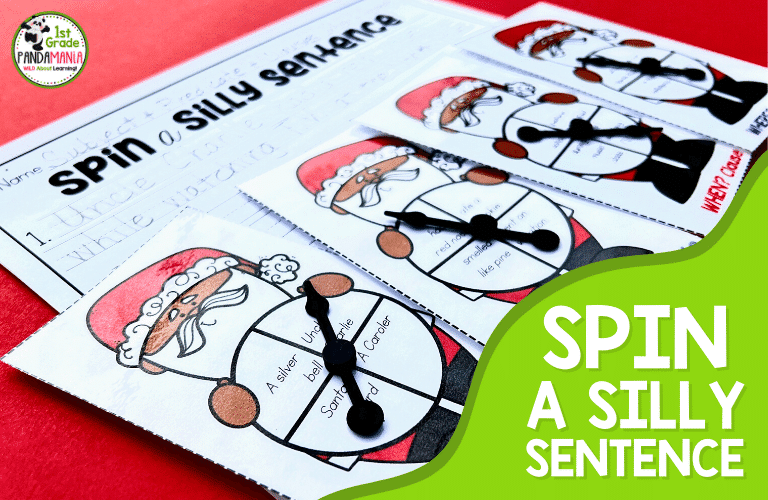Must Do May Do: The Best Reading Center Hack

This Must Do May Do System is the HACK to your rotating reading centers!
Having smooth-running groups with targeted reading activities for 1st graders AND effective independent work time has never been more exciting. A MUST Do MAY Do System has been by far the best alternative to rotating reading centers. As we know, guided reading groups are hard enough to manage without the constant activity that is created by students moving to and from reading centers. During team meetings,
…during independent student work time.
What we disliked the most about our rotating reading centers, was the loss of instruction time when students were stopping what they were doing, watching the “wheel” turn to the next activity, and then cleaning up one area to rotate to the next. Sometimes it would take 3-5 minutes to move to the next center or to get to the guided reading table.
Register a SNAP EBT cardStudents not only took too much time to clean up, but also had questions or problems about what center to go to next. These transitions rarely went smoothly. They also complained that they weren’t finished at their center and needed more time. There was so much unfinished work to keep track of. But as teachers,

…so we could teach our guided reading groups with very little instructional time lost.
What to do? After LOTS of discussions, trial, and error, we thought we would try a Must Do May Do list approach.
A MUST Do, MAY Do Approach.
With this approach, students stay at their tables (I seat them with their reading groups) for most of the time except for partner reading when they sit on the floor or carpet side-by-side to read. When called to the guided reading table, all they do is stop working and get to the table. No commotion, no wheel turning, no stopping everyone from what they were doing, etc.
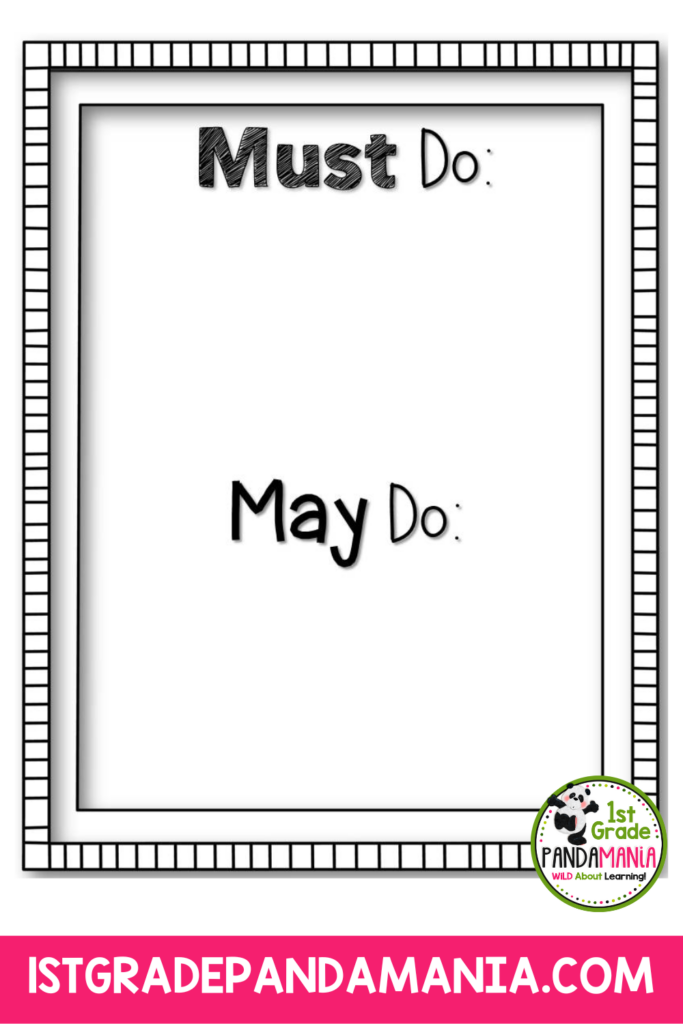
In other words, a lot more time for guided reading instruction at the table!
They have a list of what they MUST Do and when they are finished with that, they have a list for what they MAY Do. The list can be edited to fit your student’s needs in each group.
Grab a FREE set of B&W and Color editable Must Do May Do templates down below!
Easily fill in your own lists to suit each group’s needs like below. Notice the list is non-specific for what vocabulary words or what anthology story to read. This is so I don’t have to make a new list each day or week! The vocabulary words are either posted on the board or on the next page in their vocabulary notebook. And they know which story to read.
Easy Peasy!
Grab a set of these FREE MUST do MAY Do list templates below:
With my must do may do list completed, I now keep these lists looking pretty much the same every week. I just change out the materials in their bins weekly.
Here are some reading activities for 1st graders I use for each activity on the list:
- Vocabulary Log example – Read more about these here
- Seatwork examples
- Games examples
- Drills examples – Read more about these here
I’ve got my reading activities for 1st graders and Must Do May Do list done. Now I can differentiate the lists for each reading group depending on their reading goals and color code the lists by printing each list on a different color. For example, if my struggling readers are working on sight words, I make sure “Flashcards” and “Drills” are on the MUST Do list, not MAY Do so they are getting the practice they need.
In other words, I determine each group’s goals first, then create the lists and fill their bins with the needed materials.
Speaking of bins…

I purchased these bins to organize books for partner reading so they would stand vertically and titles could be more easily seen. I found this to be the best way to organize the bins. All bins and their parts, including the MUST Do, MAY DO lists, are color-coded to match the tables where they sit and/or the reading groups they are in.

We’ve covered the basics of a Must Do May Do system, now let’s get into the bins!
First things first… in order to target your reading instruction and include materials that meet your students’ needs, you need to do regular testing and group accordingly. I have a great blog post that takes you through targeted reading plan for guided reading groups!
-
Product on saleGuided Reading Lesson Plan Template and Resources K-2 Fillable FormsOriginal price was: $30.00.$10.95Current price is: $10.95.
After I create my targeted reading plan, I select seatwork that is differentiated to meet their reading goals. I use the activity sheets that come with our Houghton Mifflin Journeys series, but you can use any seatwork that supplements what your students are working on.
Some of my favorite seatwork reading activities for 1st graders
If your students are working on long vowels, my Long Vowel FLIP Books would be a perfect supplemental activity! These FLIP books are super easy to make and students can read and reread over and over again to solidify those long vowels. Find long and short vowel books below or get the BUNDLE of Long and Short Vowel FLIP Books and save $$!
Watch a short video about these FLIP Books HERE.
There are also many Short Vowel FLIP Books to choose from as well!
Another great seatwork reading activity is a 7-Up Sentence Writing Sheets that practice using sight words. Students use 3 or more of the sight words from the word bank to write 7-up sentences and circle the sight word in each sentence.
Vocabulary notebooks
In my opinion, Vocabulary Notebooks should be used DAILY for students to record vocabulary words and then define, use the word in a sentence and draw a picture. These stay in their bins all year long so they don’t get lost! Read more and see everything included in these notebooks here.

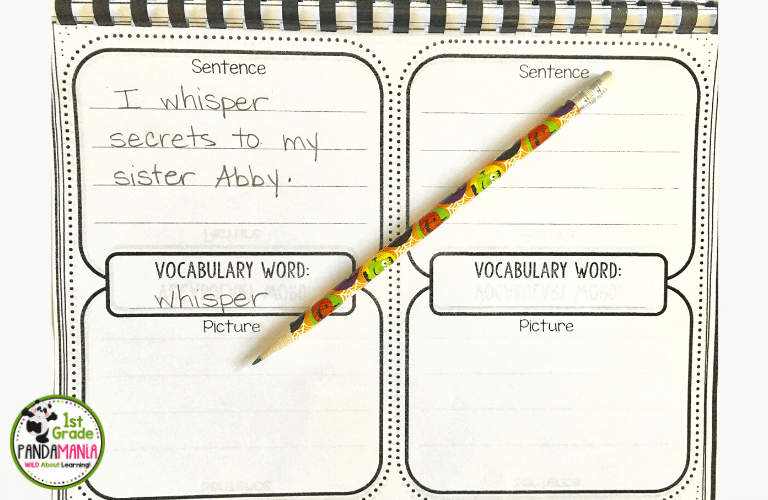

Organize Seatwork
Organization is key to any system. Here is how I keep my MDMD bins organized: Like many of you, I color-code my guided reading groups (red, yellow, green, and blue) so their bins and folders reflect those colors. Their seatwork folders can have the Must Do May Do lists attached or displayed somewhere in the room for them to reference.
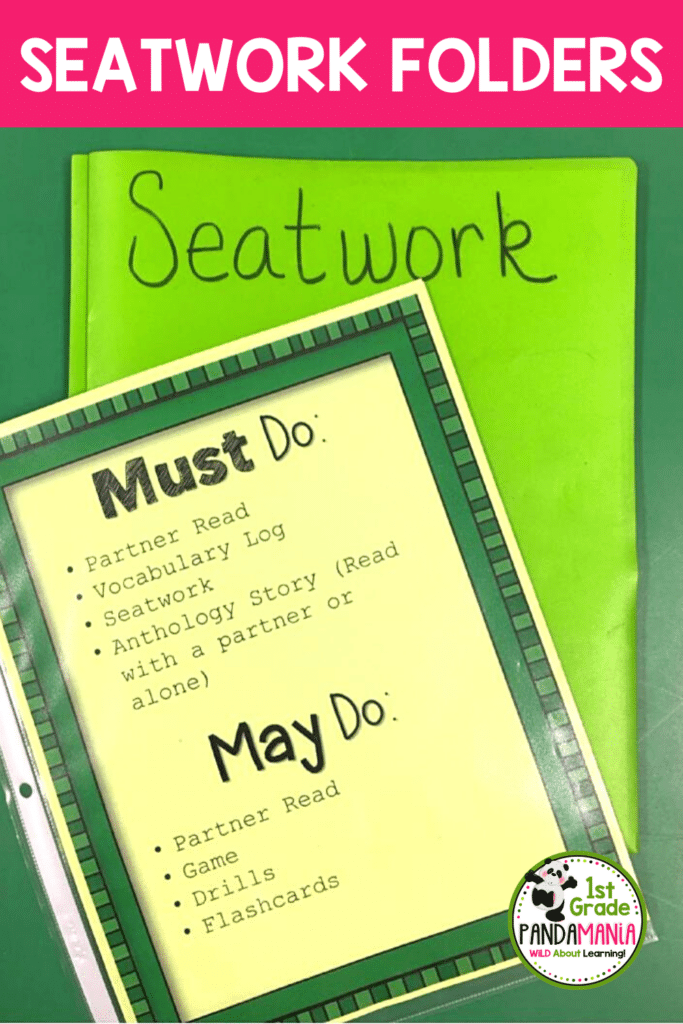
Inside the folders I write “Not Done” on the left side of the folder and “Done” on the right side of the folder.
Every day I insert new differentiated seatwork into their folders on the “Not Done” side with the students in that group.
I’ve also found that when I write names on the top, I can better keep track of who has completed their work! It takes a few extra minutes every day, but it’s well worth it.
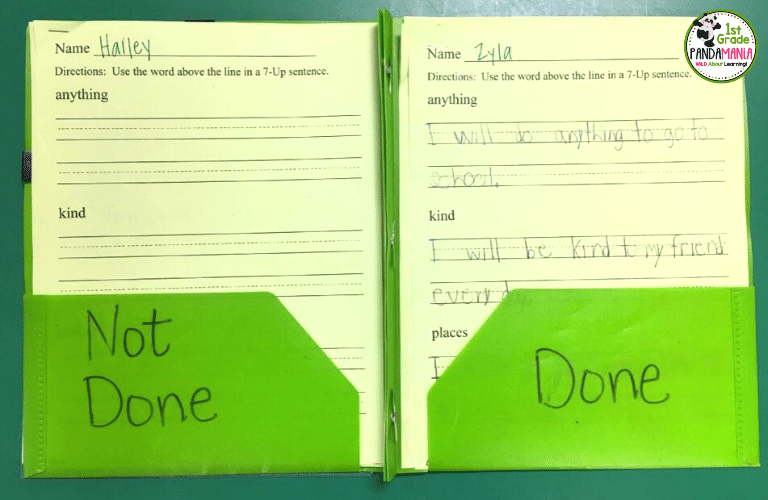
What happens when students don’t finish seatwork?
When they are finished, they insert their work on the “Done” side. The next day, I staple any unfinished work to their new seatwork. If their stapled packet of unfinished work begins to group after a few days it time to decide if:
- Is the work too challenging? Do I need to modify for that child?
- Is the student off task during their seatwork time?
- Do I need to move the student closer to the guided reading table so I can better monitor their independent work?
- Is seatwork even appropriate for this student? Perhaps this student is not an independent worker and needs to be included in two guided reading groups.
- Is it time for a note/call home?
Games/May Dos
Now that I have my seatwork activities organized in their folders, I pick out the games for the week. The games I use for the week are included right inside the bins unless they are too large. Then students are instructed on my expectations for the week. I try to include games that are simple and those they are familiar with so I am not constantly giving directions. I make sure all materials are included:
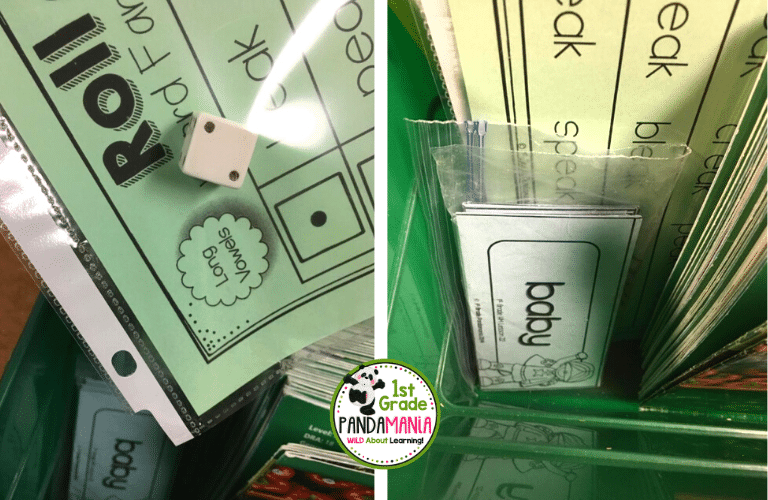
The games and reading activities for 1st graders I choose (most have this listed as a MAY Do) will support their reading goals as well. For example sight word drills, fluency phrases, sounds drills etc. that will support their reading needs at a specific time.
See below for an example of a Houghton Mifflin Sight Word Roll and Read Game:


Here are some great sight word games to check out:
- Targeted Phonics Games and Centers
- Read, Stamp, Write Fry Sight Word Center
- Read, Trace, Color, Write It Center
- Fry Sight Word Roll and Read Center
- Roll and Read Short Vowel Word Families
- Roll and Read Long Vowel Word Families
- Roll and Read Beginning Blends Center Activities
- Roll and Read Literacy Centers Big BUNDLE
- Sight Word Trains Games and Activities
- Phonics and Word Family Pocket Chart Activities BUNDLE
- Speed Drills Big BUNDLE For Guided Reading and Centers
-
Product on saleLong Vowel Worksheets Phonics Activities BUNDLEOriginal price was: $17.00.$15.00Current price is: $15.00.
-
Product on saleShort Vowel Worksheets Phonics Activities BUNDLEOriginal price was: $24.00.$19.95Current price is: $19.95.
Now let’s talk about books.
I really only change out books as needed, but research shows that repeated reading of familiar text can support fluency building. The books I pick are at their independent reading level so they can easily read them with a partner with success. I also include books that they have read successfully at the guided reading table.
Partner reading is a practiced skill. We regularly review expectations for partner reading:
- How they sit
- who reads when
- how to point, etc.
I include 2 copies of each title per partnership if possible, but sometimes they share. 🙂 Expectations for both of these scenarios is important as well. Read more about partner reading here and grab a FREE anchor chart!
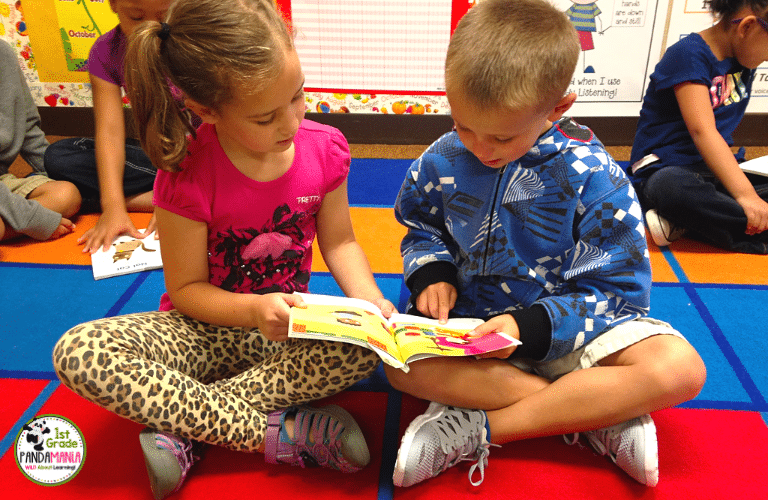
So far, our MUST Do, MAY Do system is working!
As with any program, teaching students your expectations for each activity is a must. Our students enjoy mostly uninterrupted, quiet work time (unless they are called to the guided reading table). That way, students can get their seatwork done and have much more instruction time at the guided reading table!
More time in text..Isn’t that what they need?
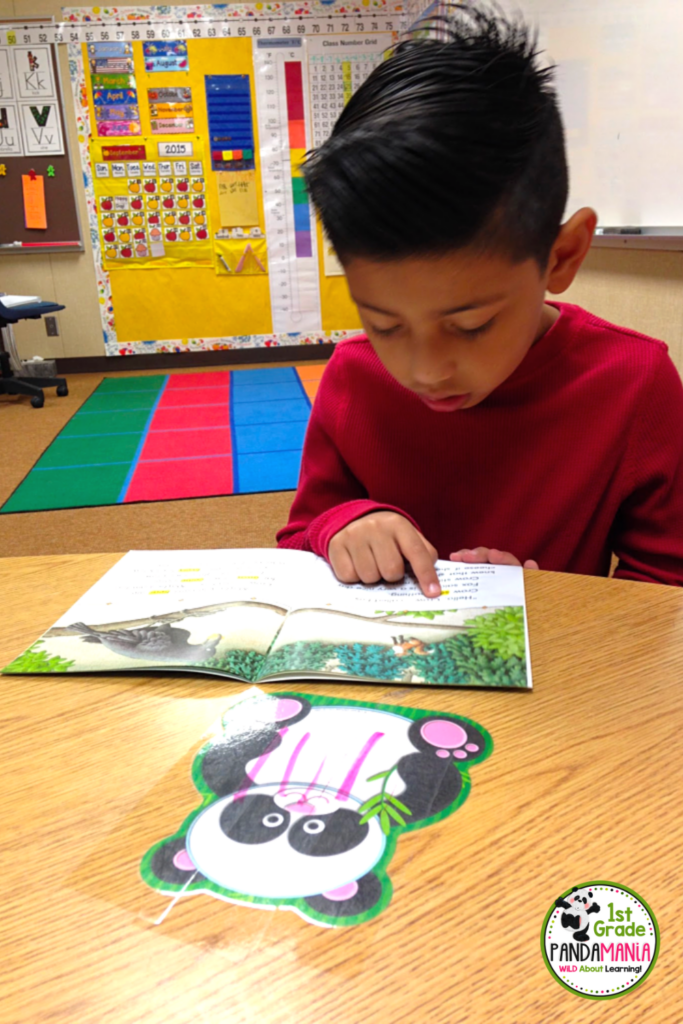
Let me know your thoughts! If you have any questions leave a comment below!
Looking for more great guided reading blog posts? Check out these below:
- 7 Ways to Squeeze MORE Into Your Literacy Block
- Targeted Guided Reading
- 6 Guided Reading Tips That Work!
- Vocabulary Every Day!
Thanks for stopping by!
-
Product on saleHMH Into Reading Sight Words and Spelling Homework 1st Grade 2020Original price was: $4.00.$2.00Current price is: $2.00.
-
Product on saleChristmas Activities for the Classroom BIG Bundle (1st and 2nd Grades)Original price was: $18.45.$12.91Current price is: $12.91.
-
Product on saleHMH Into Reading Spelling, Sight Words, Vocabulary BUNDLEOriginal price was: $62.20.$49.95Current price is: $49.95.
-
Product on saleHMH Into Reading Challenge and Regular Spelling Lists BUNDLE 1st Gr. 2020Original price was: $7.00.$5.60Current price is: $5.60.
-
Product on saleLong Vowel Worksheets Phonics Activities BUNDLEOriginal price was: $17.00.$15.00Current price is: $15.00.
-
Product on saleShort Vowel Worksheets Phonics Activities BUNDLEOriginal price was: $24.00.$19.95Current price is: $19.95.
-
Product on saleFluency and Comprehension Passages with Long and Short Vowels BUNDLEOriginal price was: $9.00.$7.50Current price is: $7.50.
-
Product on saleGuided Reading Lesson Plan Template and Resources K-2 Fillable FormsOriginal price was: $30.00.$10.95Current price is: $10.95.



